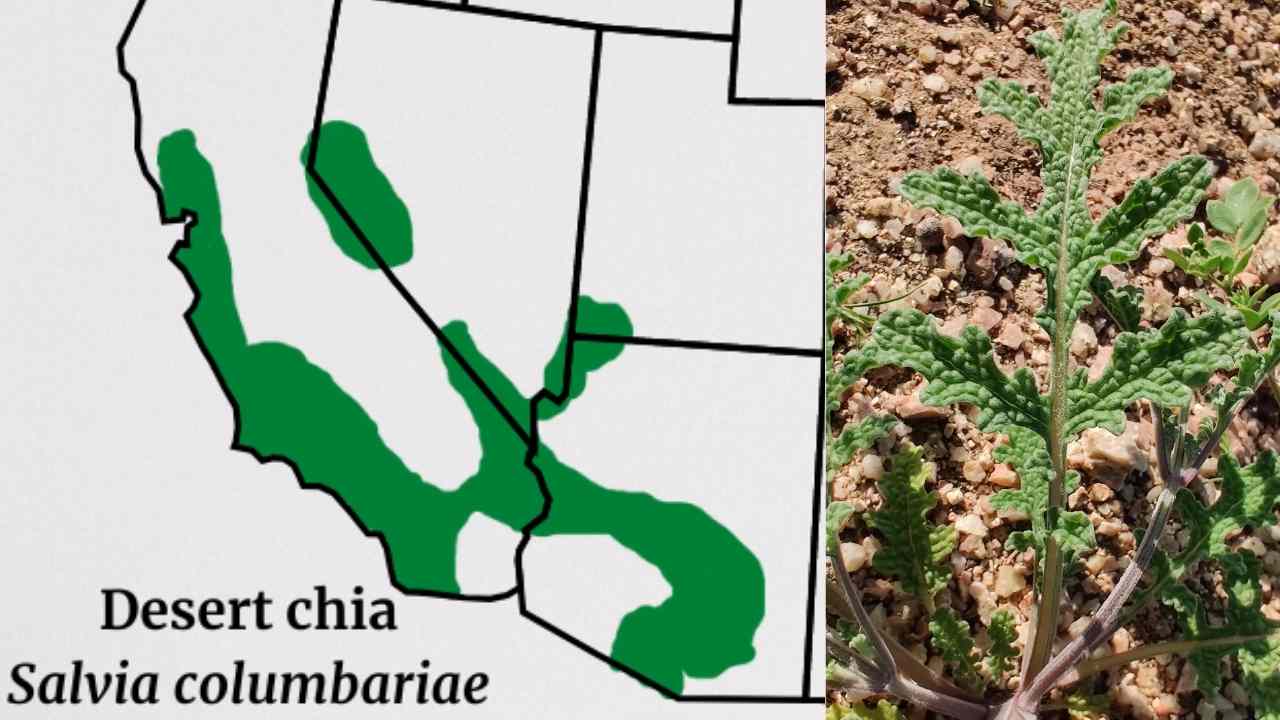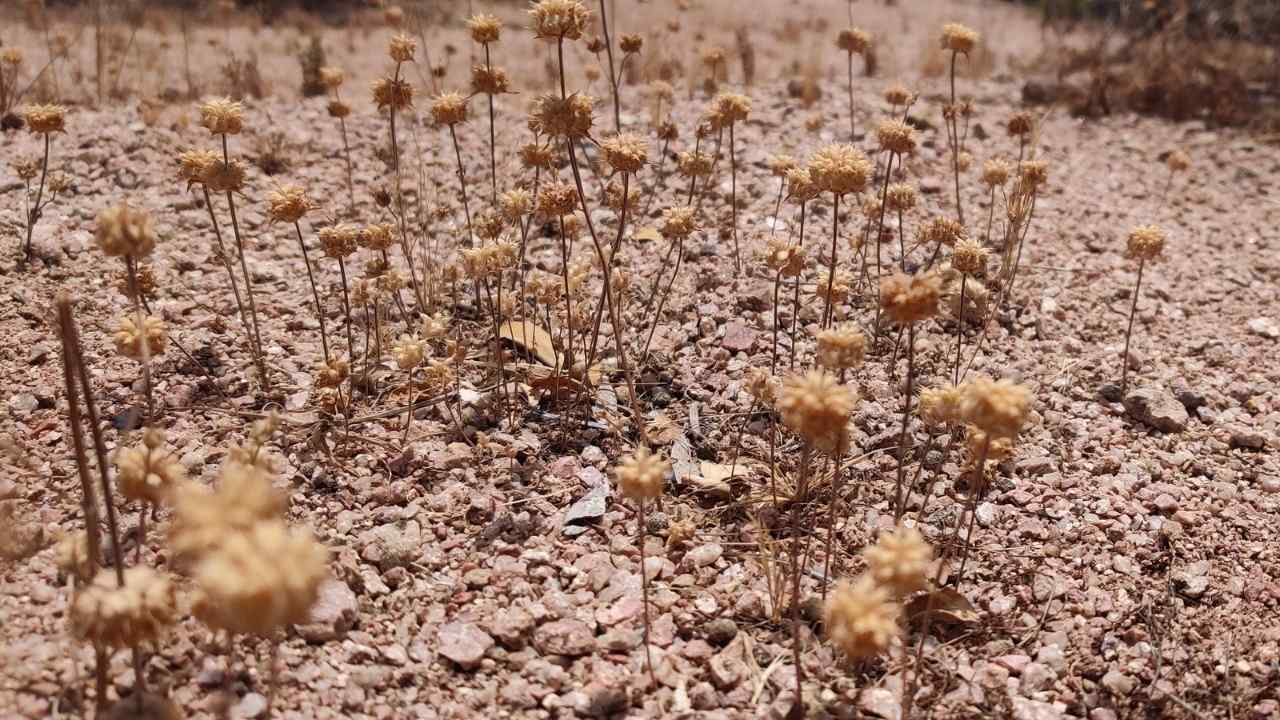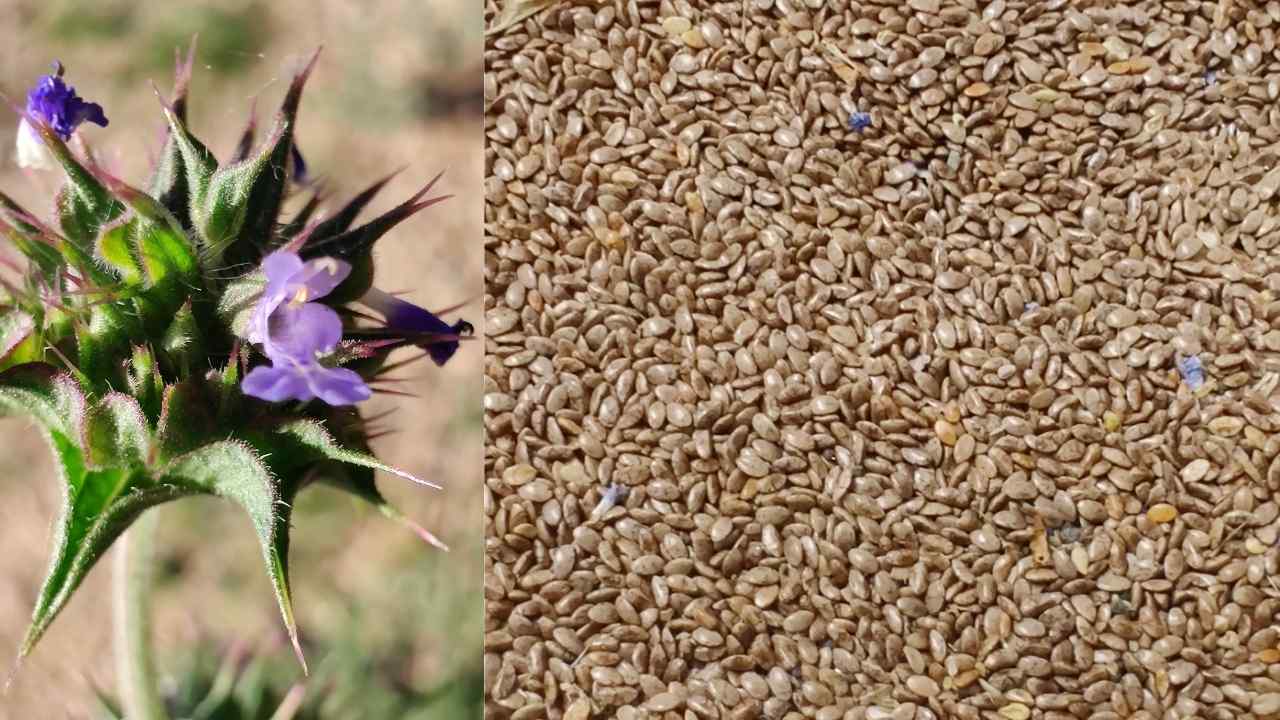
Desert Chia- A Native Wild Food
Jul 22, 2022Introduction
Desert chia(Salvia columbariae) is our native desert version of store-bought chia (Salvia hispanica), which is a cultivated seed originally from Central America, and is popularly considered a “superfood” for its wide range of nutritional benefits.
Wild chia has similar benefits, and was historically harvested in large amounts and used as a high-energy food. Today it is much more practical to buy chia from the store than harvest native chia, but I would like to encourage you to harvest wild chia from time to time so you can pass on this knowledge to future generations.
Although it’s more time consuming to harvest, desert chia is an important food resource that can significantly contribute to a person’s daily food needs in an emergency. It can be cultivated using only the scant rain that falls in the Sonoran Desert Uplands, making it an irreplaceable crop.

Picture: Note the deeply lobed leaves with a crinkled texture.
Identification + Range
Chia is a common plant in washes in the Sonoran Desert Uplands. Look on the margins of washes, the first places that get flooded in a big rainstorm. Chia prefers these sandy deposits that stay moist for a longer period of the year. The plant itself can be difficult to find at first, not because it’s uncommon, but because it tends to blend in.
Desert chia can be found almost immediately if you know what to look for. The dead stalks of the plant can be seen almost all year, or at least until it sprouts again in the cooler months. The dried stalks are useful in locating the best harvesting locations, as the seeds themselves are only available for a short period.
Desert chia is an annual plant in the Mint Family that grows to about knee-high(but often only 6in.). It has a strong minty aroma, and sprouts in response to cool-season rains. The leaves are deeply lobed with a distinct crinkled texture.
When the plant matures it sends up stalks lined with clusters of blue flowers noticeable from a short distance away. Like all plants in the Mint Family, the stalk is distinctly square and the leaves on the stem are oppositely arranged.
One month after flowering ends, the plant dries and the seeds are ready for harvest. Wild chia seeds look similar to store bought chia, but are brown instead of black.
Harvesting and Processing
Chia flower clusters get sharp when they dry, so you may want gloves. You will need at least a 5 gallon bucket, or something wider, and a large spoon to knock out the seeds. Simply bend the dead stalks over and use your spoon to knock them into your bucket. Make sure not to let seeds from any other nearby plant get into your bucket.
Next, the larger pieces are removed by hand and the seeds are put into a bowl. Go outside and gently blow into the bowl to remove all of the debris. This is called winnowing.
After you’ve winnowed your seeds they’re ready to be used right away. Chia are a unique type of seed. When you get them wet, they form a sort of gel around the seed. They are added whole to drinks, smoothies, or baked goods and eaten as-is, although grinding them first may increase the amount of nutrients your body absorbs.
I add some electrolyte powder to a glass of water and put the seeds in whole. Wait a few minutes for them to gel, then it's ready to drink. I also like to add chia seeds to oatmeal.

Pictured above: Spiky flower clusters, oppositely arranged leaves, and square stems of wild chia.
Pictured below: The dead stalks of desert chia are a common sight in the Sonoran Desert, but they blend in and are easily overlooked.

Season of Availability
Harvesting season for wild chia is variable depending on winter rain, and some years it may not produce at all. In the years it produces, the seeds are ready exactly one month after the last flowers are seen, and in my area (2,200ft.) the season is usually around late April/ early May.
Sustainable Harvesting
According to William Pink, a Luiseño/Cupeño man, “Seed beating chia [Salvia columbariae] plants helped scatter the seeds around and helped the crop. Otherwise the seeds just stay in the vessel and with no collecting the insects get the seeds.”(M. Kat Anderson 2005)

Conclusion
Desert chia is a great plant for your desert landscape. Not only is it a pretty blue wildflower, it's also a drought tolerant staple food. To grow it in your own yard, sow the seeds after the first big cool-season rain of the year.

Want our FREE ebook on Sonoran Desert foraging? Check out this link to download it today: https://www.legacywildernessacademy.com/sonoran-desert-ebook


